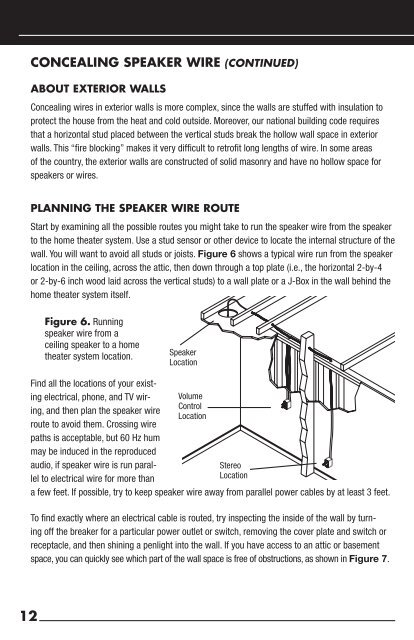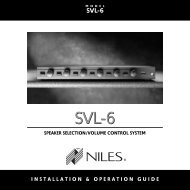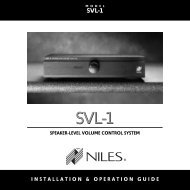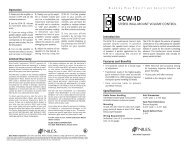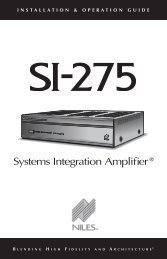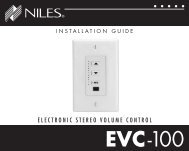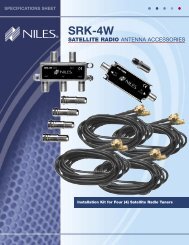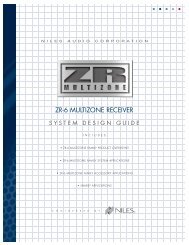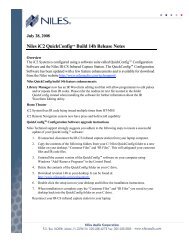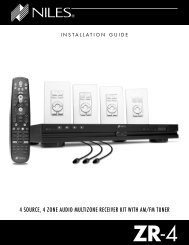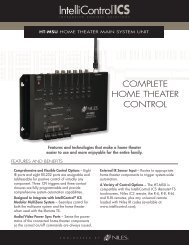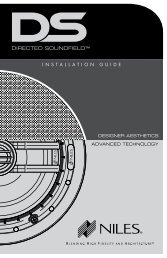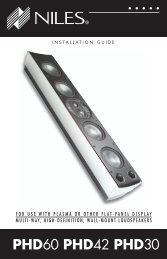HDLCR - Niles Audio
HDLCR - Niles Audio
HDLCR - Niles Audio
Create successful ePaper yourself
Turn your PDF publications into a flip-book with our unique Google optimized e-Paper software.
12<br />
CONCEALING SPEAKER WIRE (CONTINUED)<br />
ABOUT EXTERIOR WALLS<br />
Concealing wires in exterior walls is more complex, since the walls are stuffed with insulation to<br />
protect the house from the heat and cold outside. Moreover, our national building code requires<br />
that a horizontal stud placed between the vertical studs break the hollow wall space in exterior<br />
walls. This “fire blocking” makes it very difficult to retrofit long lengths of wire. In some areas<br />
of the country, the exterior walls are constructed of solid masonry and have no hollow space for<br />
speakers or wires.<br />
PLANNING THE SPEAKER WIRE ROUTE<br />
Start by examining all the possible routes you might take to run the speaker wire from the speaker<br />
to the home theater system. Use a stud sensor or other device to locate the internal structure of the<br />
wall. You will want to avoid all studs or joists. Figure 6 shows a typical wire run from the speaker<br />
location in the ceiling, across the attic, then down through a top plate (i.e., the horizontal 2-by-4<br />
or 2-by-6 inch wood laid across the vertical studs) to a wall plate or a J-Box in the wall behind the<br />
home theater system itself.<br />
Figure 6. Running<br />
speaker wire from a<br />
ceiling speaker to a home<br />
theater system location.<br />
Find all the locations of your existing<br />
electrical, phone, and TV wiring,<br />
and then plan the speaker wire<br />
route to avoid them. Crossing wire<br />
paths is acceptable, but 60 Hz hum<br />
may be induced in the reproduced<br />
audio, if speaker wire is run parallel<br />
to electrical wire for more than<br />
Speaker<br />
Location<br />
Volume<br />
Control<br />
Location<br />
Stereo<br />
Location<br />
a few feet. If possible, try to keep speaker wire away from parallel power cables by at least 3 feet.<br />
To find exactly where an electrical cable is routed, try inspecting the inside of the wall by turning<br />
off the breaker for a particular power outlet or switch, removing the cover plate and switch or<br />
receptacle, and then shining a penlight into the wall. If you have access to an attic or basement<br />
space, you can quickly see which part of the wall space is free of obstructions, as shown in Figure 7.


